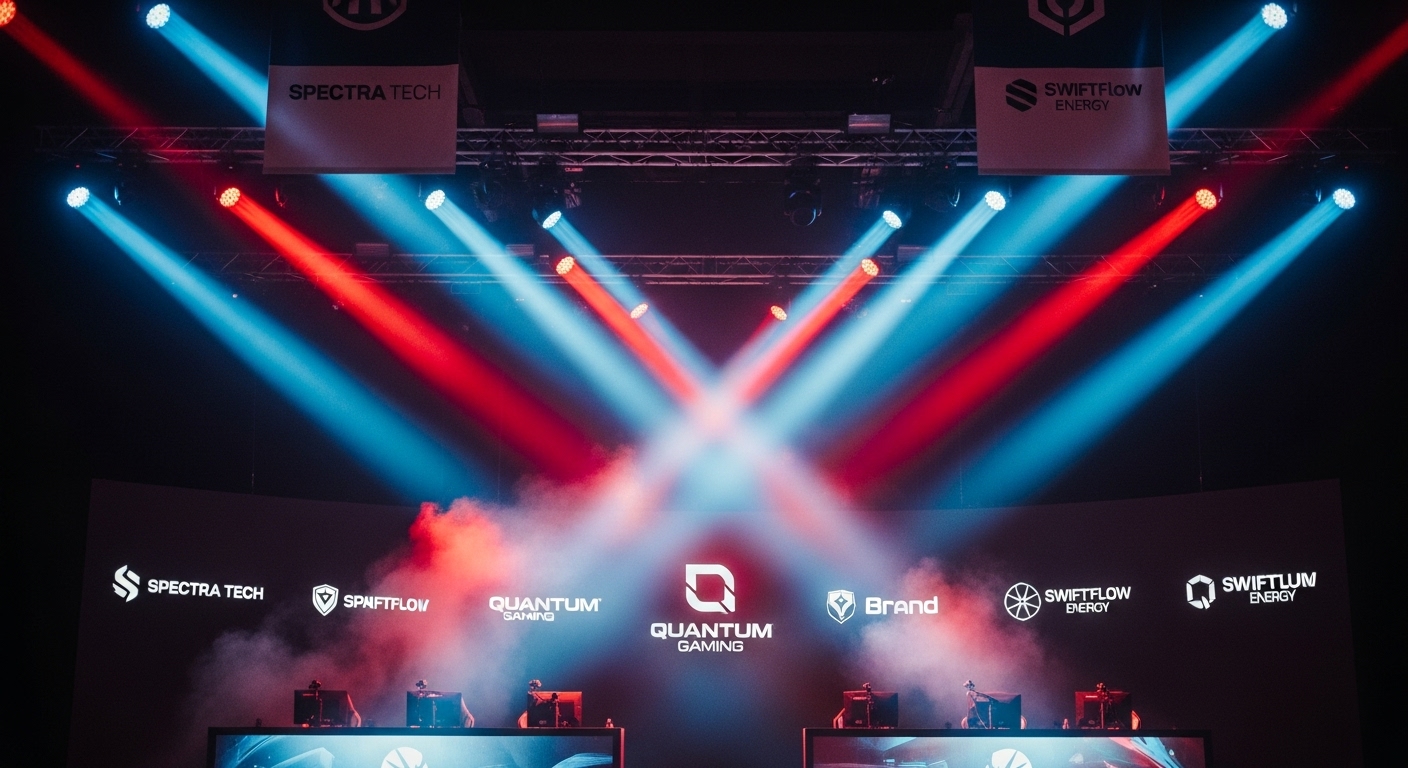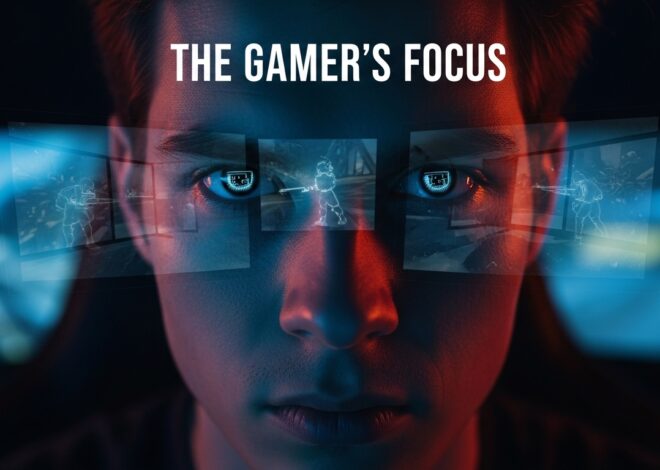
The Rise and Revolution of Esports: A New Era of Competitive Entertainment
Introduction to Esports
Over the past few decades, the world has witnessed a transformation in how entertainment and competition are perceived. What once began as casual gaming sessions among friends has evolved into a multi-billion-dollar industry known as esports. Esports, or electronic sports, refers to competitive video gaming where individuals or teams compete against each other in organized tournaments. These competitions are broadcasted online and even in stadiums filled with thousands of spectators. It is a phenomenon that combines technology, talent, and community into one dynamic cultural movement that continues to grow year after year.
The rise of esports has challenged traditional ideas of sports and competition. Players are no longer defined by physical athleticism but by mental agility, strategy, reflexes, and coordination. The popularity of esports has made it a global sensation, rivaling traditional sports like football and basketball in viewership and fan engagement.
The Origins of Esports
The concept of competitive gaming can be traced back to the early days of arcade games in the 1970s and 1980s. The first known video game competition took place at Stanford University in 1972, featuring the game “Spacewar.” The prize was a simple subscription to a magazine, but it marked the beginning of something extraordinary. As technology advanced and gaming consoles became more accessible, competitions became more frequent.
During the 1990s, with the rise of games like Street Fighter, Counter-Strike, StarCraft, and Quake, esports began to take on a more professional form. Internet connectivity allowed players from around the world to compete against each other, breaking geographical barriers. By the early 2000s, esports had started to attract corporate sponsors and professional organizations, setting the foundation for the modern esports ecosystem we see today.
The Explosion of Online Gaming
The growth of broadband internet in the early 2000s completely revolutionized the gaming landscape. Online multiplayer gaming became mainstream, and new platforms allowed players to compete in real time from their own homes. Titles like Counter-Strike, Warcraft III, and StarCraft became central to early esports tournaments, with South Korea emerging as one of the first nations to recognize and institutionalize competitive gaming.
Television channels began broadcasting esports events, and professional gaming leagues were established. With the rise of streaming platforms, particularly those that focused on live broadcasting of gameplay, esports became accessible to millions around the world. Players could now build their personal brands, fans could follow their favorite teams, and organizers could attract advertisers, thus creating a sustainable business model for the esports industry.
Professionalization of Esports
As esports evolved, so did its level of professionalism. What was once a hobby for enthusiasts turned into a legitimate career path. Professional esports players began signing contracts, receiving salaries, and participating in international tournaments offering millions of dollars in prize money. Organizations began to operate like traditional sports teams, employing coaches, analysts, and managers to enhance performance.
Training routines for professional gamers became rigorous. Players dedicated hours daily to mastering their craft, studying game strategies, and improving their reflexes. The discipline and teamwork required in esports rival that of traditional athletic sports. With global competitions and sponsorship deals, esports has become an aspirational career for many young gamers worldwide.
The Role of Technology in Esports
Technology has been the backbone of esports growth. Advancements in graphics processing, internet speed, and streaming technology have created immersive and interactive gaming experiences. The rise of virtual reality, artificial intelligence, and cloud gaming is pushing esports into new dimensions. Modern gaming setups now require not only skill but also technical optimization, as milliseconds can determine victory or defeat.
Streaming platforms have become the lifeblood of esports viewership. They allow players to connect directly with their audiences, creating communities around shared interests. Technology has also democratized esports by allowing anyone with a good internet connection and a gaming device to participate or spectate, making it one of the most inclusive forms of entertainment in the digital age.
Popular Esports Titles
Several video games have become synonymous with the esports industry. Each game has its own style, rules, and fan base. Games like League of Legends, Dota 2, Counter-Strike: Global Offensive, Valorant, and Overwatch dominate the competitive scene. Each of these titles has hosted world championships with record-breaking prize pools and audiences.
For example, Dota 2’s “The International” tournament has awarded tens of millions of dollars in prizes, making it one of the most lucrative competitions in the world. League of Legends’ World Championship is watched by millions annually, rivaling traditional sporting events in global viewership. Fighting games like Tekken and Street Fighter maintain their own dedicated fan bases, while battle royale games like Fortnite and PUBG have introduced younger audiences to the competitive gaming scene.
Global Esports Culture
Esports is more than just playing games; it is a culture that unites people from diverse backgrounds. It has its own celebrities, fan communities, fashion trends, and social media ecosystems. Fans support their favorite teams with the same passion as traditional sports enthusiasts. Cosplay, streaming content, and fan art contribute to a vibrant and ever-growing culture around esports.
Different regions have also developed unique esports identities. South Korea remains a powerhouse, particularly in games like StarCraft and League of Legends. North America and Europe are strong in games such as Counter-Strike and Valorant. Meanwhile, countries in Southeast Asia are rapidly growing as new esports markets, producing talented players and large fan communities.
Esports and Mainstream Recognition
One of the most significant milestones for esports has been its entry into mainstream media and traditional sports discussions. Universities now offer scholarships for esports athletes, and some countries recognize professional gamers as official athletes. Esports tournaments are broadcast on television networks, and large corporations invest heavily in sponsoring teams and events.
The inclusion of esports as a demonstration event in the Asian Games and discussions about its potential inclusion in future Olympic events signify a major step toward full recognition. Governments and institutions have begun to see esports as a driver of youth engagement, technological innovation, and even tourism.
Economic Impact of Esports
The financial ecosystem surrounding esports is vast. From sponsorships and advertising to merchandise and media rights, esports generates billions in global revenue annually. Major brands, including those outside the gaming industry, see esports as a gateway to younger, tech-savvy audiences.
Tournaments attract millions of viewers, which translates into massive advertising opportunities. Gaming equipment companies, energy drink brands, and even automobile manufacturers have become key sponsors. Esports arenas and conventions also contribute to local economies, creating jobs and business opportunities.
Moreover, the rise of content creators and streamers has expanded the monetization model of esports. Individual players can earn through live streaming, content creation, brand endorsements, and fan donations, allowing them to build personal empires beyond traditional team contracts.
The Role of Education in Esports
Esports has entered educational institutions around the world, not just as an extracurricular activity but as an academic subject. Universities offer degrees in game design, esports management, and digital marketing related to the industry. Students learn about team dynamics, broadcasting, event organization, and gaming technology.
High schools and colleges host their own esports leagues, teaching students teamwork, leadership, and problem-solving skills. Esports education also helps break stereotypes about gaming by showing that it can foster valuable skills applicable in real-world careers.
Health and Well-being in Esports
While esports demands mental precision and stamina, it has also raised concerns about player health. Long hours of practice can lead to physical strain, eye fatigue, and burnout. Mental health has become a key focus for professional organizations, which now provide psychological support, fitness programs, and structured schedules for players.
Physical exercise, balanced nutrition, and mental health awareness are increasingly emphasized. The industry has matured enough to recognize that longevity in esports depends not just on skill but on maintaining overall well-being.
Women in Esports
For a long time, esports was perceived as a male-dominated field. However, women have been breaking barriers and making significant contributions to the industry. Female players, commentators, and managers have become role models for a new generation of gamers. Esports organizations are now more aware of inclusivity, promoting equal opportunities for everyone regardless of gender.
The rise of all-female tournaments and organizations supporting women in gaming has helped diversify the scene. The push toward equality and representation has made esports a more welcoming environment for all participants.
Esports and Traditional Sports Collaboration
Traditional sports franchises have recognized the potential of esports and have started investing heavily in it. Many football and basketball teams own or sponsor esports teams, creating cross-industry collaborations. These partnerships merge fan bases and provide new forms of entertainment that bridge physical and digital competition.
Some sports leagues have even launched virtual versions of their games, such as FIFA and NBA 2K, allowing fans to engage in esports versions of their favorite sports. This crossover continues to blur the lines between traditional athletics and digital competition.
The Future of Esports
The future of esports looks incredibly promising. With the continuous growth of technology and digital entertainment, esports is set to become an even more integral part of global culture. Virtual reality, artificial intelligence, and blockchain technologies are likely to influence how esports is played, viewed, and monetized.
Esports will continue to expand into new markets, with increasing support from governments, educational institutions, and corporations. The professional standards will rise further, and esports may soon find a permanent place alongside traditional sports on the world stage.
Conclusion
Esports has evolved from a niche hobby into a global cultural and economic powerhouse. It represents the perfect fusion of technology, creativity, and competition. Millions of fans around the world tune in daily to watch their favorite teams and players, while aspiring gamers dream of joining the professional ranks.
The journey of esports reflects the digital transformation of society itself—how innovation, community, and passion can redefine what it means to compete and entertain. From humble beginnings in arcades to sold-out arenas and international championships, esports stands as a symbol of modern achievement. It is not just the future of gaming but also the future of global entertainment.


